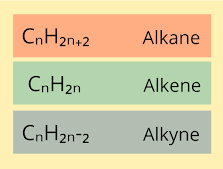Gas Laws made easy!
We know matter around us is classified into three states,
- Solids
- Liquids
- Gases
In the gaseous state, the inter-molecular spaces are very high and the forces are low. They are highly compressible and also possess low densities.
Gas laws was taught to me in grade 11 and honestly, I never did understand how to remember it! When I was in college, one of my lecturers made it so simple and boy was it easy to remember! But before I start writing about the gas laws, let us look at the various physical properties of gases.
Gas laws might seem confusing at first. But the key is to remember the physical property which is considered as a constant for each law. These laws were formulated by various scientists after extensive research.
Boyle's Law
The law describes the pressure volume relationship while the temperature remains constant. It was given by Robert Boyle (1662). The law states that
The volume of a fixed mass of gas is inversely proportional to its pressure at constant temperature.
It describes the relation between pressure and volume of gas while keeping temperature constant.
Mathematically,
When the volume increases the pressure decreases. This applies only if the temperature and the mass of gas remain constant.
Another relation can be drawn based on the above equations.
In this equation, volume of the gas changes from to
when the pressure changes from
to
while the temperature and the amount gas remains constant.
Charle's Law
This law describes volume temperature relationship of a gas at a constant pressure. It was initially given by Jacques Charles (1787) and was developed further by Joseph Gay Lussac. It states that,
The volume of a fixed mass of a gas at constant pressure is directly proportional to the temperature in kelvin scale.
So,
At a constant pressure and fixed mass, when there is an increase in temperature there in an increase in volume.
Similar to Boyle's law, another relation can be drawn
In this equation, volume of the gas changes from to
when the temperature changes from
to
while the pressure and mass remains constant.
Gay Lussac's Law
This law describes the pressure temperature relationship of gases at a constant volume. This law is called Amonton's law. It states that,
The pressure of a fixed mass of a gas at constant volume is directly proportional to the temperature in kelvin scale.
Mathematically,
In the above relation, pressure of the gas changes from to
when the temperature changes from
to
while the volume and mass remains constant.
Avagadro's Law
Given by Amedeo Avagadro in 1811, this law gives the volume amount relationship at constant temperature and pressure. It states that,
Equal volumes of all gases under similar conditions of temperature and pressure contain equal number of molecules.
This law basically means, when the temperature and pressure the volume is directly proportional to the number of molecules (N).
The number of molecules is also directly proportional to the number of moles(n). So,
Here, m is the mass of gas and M is its molar mass.
So,
Mass over volume is density. The molar mass is,
Ideal Gas Equation
When a gas follows all the above laws, it is called an ideal gas. It is assumed that ideal gases do not possess any intermolecular forces between them. Usually, real gases follow the above laws only in specific conditions. This is because they have intermolecular forces between them. The combination of Charle's law, Boyle's law and Avagadro's law gives us the ideal gas equation.
This equation gives us the relationship between four variables- pressure, volume, temperature, number of moles.
According to Boyle's law
( Constant T and n)
According to Charle's law
( Constant P and n)
According to Avagadro's law
( Constant T and P)
Combining the above equations,
The above equation is called the ideal gas equation. This equation is applicable to any gas showing or approaching ideal behavior. Out of the four variables present in the above equation, two of them are extensive while the other two are intensive. Pressure and temperature are intensive variables as they don't depend on the quantity of the gas. Volume and number of moles are extensive variables as they depend on the quantity of the gas.
Combined Gas Law
If the temperature, pressure and volume of a fixed amount of gas varies from ,
,
to
,
,
. The ideal gas equation for two states can be written as
Combining the above two equations,
Hope the information given was helpful. Like I said, the trick to remember the laws is to remember the variables and constants for each.




Comments
Post a Comment